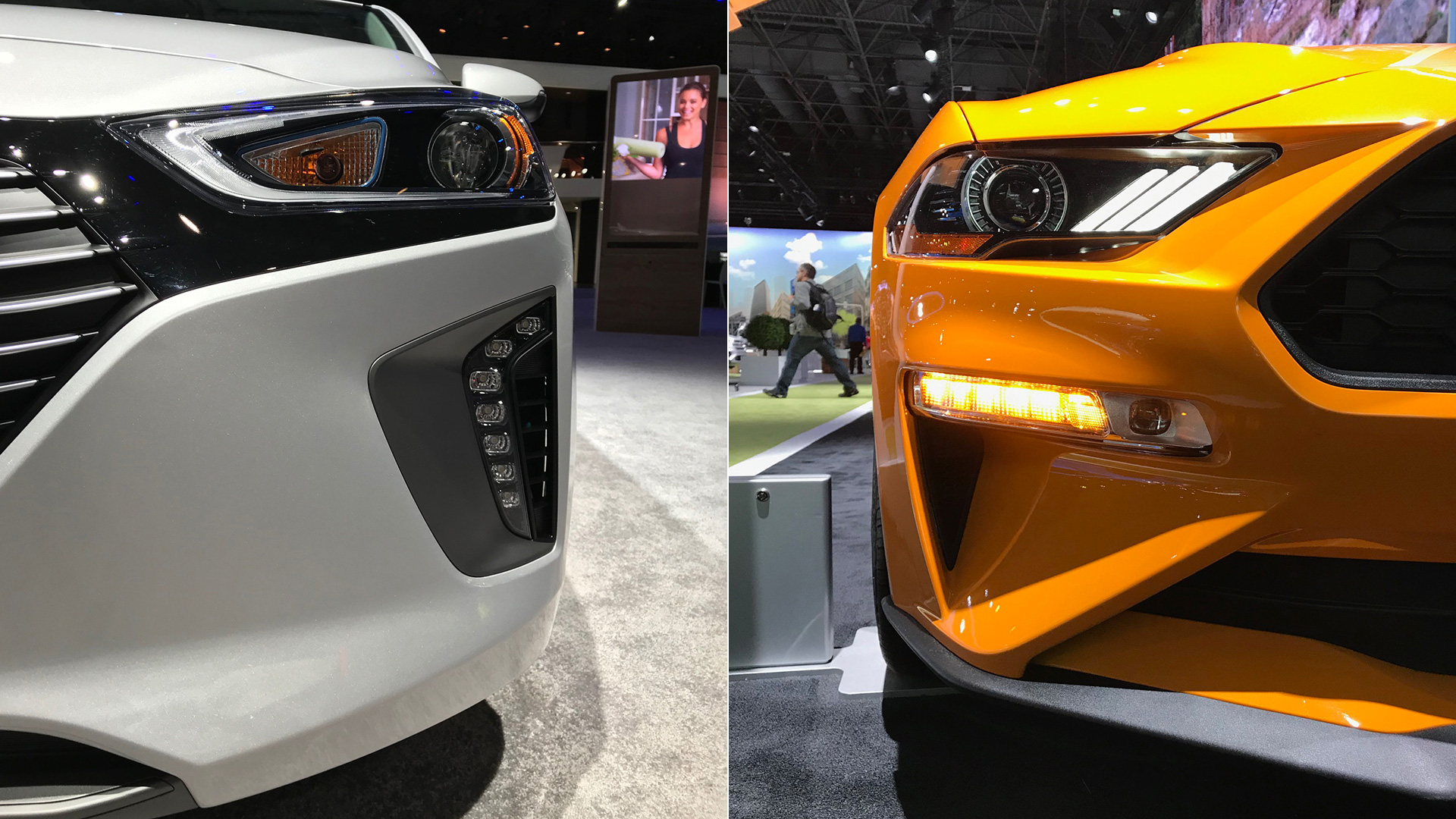

There is a plague spreading through the automotive industry. I’m not talking about the current glut of crossovers swamping the market, the rush to make pickup trucks as bougie as possible, or even the need of nearly every carmaker to puff up its chest by bragging about its bold electric mobility plans. No, I’m talking about a curse that’s slowly growing into an aesthetic nightmare, one that’s already ruined the looks of vehicles that deserve far better: the increasingly-skinny, vertically-oriented air ducts on the corners of new cars’ front fascias.
Now, carmakers have been sticking airflow-related elements on the lower corners of their vehicles’ faces for ages; their aerodynamic and cooling virtues are well-known. But for most of automotive history, these vents were horizontally oriented—wide, squat openings. As most of the lines of an automobile’s design tend to be horizontal in nature, these looked fine. Handsome, even, in some cases.

These new vertical air ducts, however, clash violently with all those pleasing symmetrical horizontal lines. Worse, in some cases, they can create something of a disturbing Uncanny Valley effect—warping a car’s familiar anthropomorphic face into something unsettling, even revolting. As a result, those vertical vents have a bad tendency to spoil the looks of vehicles that are otherwise damn fine-looking cars. The Genesis G70, the refreshed 2018 Ford Mustang, the Kia Stinger GT—all sporty, well-proportioned vehicles whose otherwise-attractive faces are spoiled by the north/south-oriented mini-maws.



Part of the problem, no doubt, stems form the pedestrian crash safety standards mandated in Europe that have forced carmakers to raise hoods higher and higher. Doing this, of course, means the whole front end needs to be taller—which means there’s more empty space between the headlamps and the bottom of the bumper that needs to be filled. But designers have always been forced to work around safety regulations; it’s hard to believe that these fang-like openings are the best they can come up with.

This growing problem was particularly apparent at this year’s New York Auto Show, which saw several new cars revealed with these odd-looking elements on their faces. But the most egregious example by far was GM’s torquey, all-American road-going Gulfstream, the new Cadillac CT6 Vsport. The two cars on the show stand both wore dark-colored paint that helped to mask the problem, but look closely, and the black plastic shapes were revealed clear as day, hanging off the side of each pillar-like LED running light like a gangbanger’s teardrop tattoo.
Most bizarrely of all, though: The vents on the Cadillac aren’t even vents. They’re completely solid; no air can pass through. Which, as far as I can tell, means they serve no practical purpose. They’re just…there, screwing up the face of what would otherwise be a great-looking four-door.

I know, in the grand scheme of things, complaining about which way the air ducts on a car’s face point is a gripe so minor, even George Costanza would say I need to let it go. But the appeal of cars has always been as much about how they look as what they can do, and these little blemishes punch well above their weight in their ability to uglify otherwise-sexy cars. As the world seems to move towards a future in which carmakers trade internal combustion character for electric anonymity, styling will be forced to pick up the slack in order to keep cars cool…which is all the more reason to cut this design trend off at the knees now, before too many good vehicles wind up hurt.